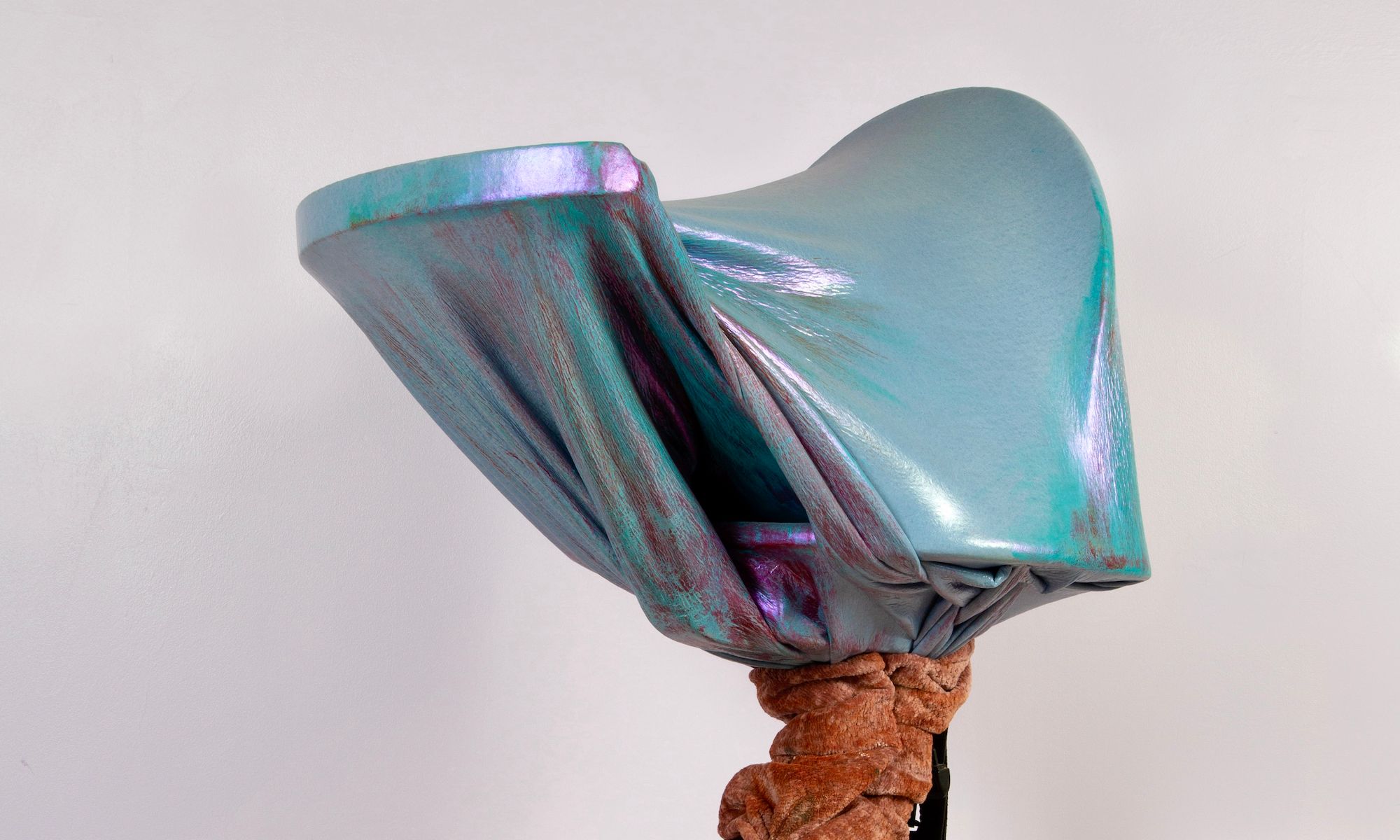Lydia Nobles, Blair, from the series As I Sit Waiting (2021-22) Courtesy the artist
One day in 2018 I found myself in a Planned Parenthood clinic in New York City waiting for abortion pills and, as an artist, visualisations preoccupied my mind. I kept wondering: how could the stories of the individuals in this waiting room be heard and translated through sculpture?
Three years later, while isolated during the pandemic and with time to reflect on my own past medical interventions—including the abortion—as a catalyst, I began acting on my vision for an art series titled As I Sit Waiting by scouring social media for individuals willing to share their stories. I talked with people on Zoom, listening to their personal experiences with abortion access. To date I have produced 18 short documentaries and created sculptures to reflect each person’s story. The series covers experiences across 12 states and is ongoing.
Amid the onslaught of censorship in US schools, As I Sit Waiting unexpectedly made national headlines last month. Just two days before the opening of the exhibition Unconditional Care: Listening to People’s Health Needs at Lewis-Clark State College in Idaho, I was informed that four pieces from my series would be removed.
My work has been exhibited in museums and galleries like the Brooklyn Museum, Lyman Allyn Museum, Latchkey Gallery and Lump Gallery, and been supported by residencies like Pink Noise Projects and Field Projects. It is currently financially supported by the New York Foundation for the Arts.
The college claimed my art violated Idaho’s No Public Funds for Abortion Act (NPFAA), which prohibits the use of public funds for abortion, including speech that may “promote” or “counsel in favour of abortion”. The college also pulled works created by Katrina Majkut and Michelle Hartney for referencing abortion. But our work is not promoting or counseling in favour of abortion. It is simply reflecting the stories of those who have accessed abortion in this country.
Unconditional Care was guest-curated by Majkut at the college’s Center for Arts and History and takes an unbiased, educational approach to important health issues such as chronic illness, disability, pregnancy, gun deaths and sexual assault. For months, Majkut and I had been working together to select which documentaries from my series would be included in the show.
Installation view of Unconditional Care: Listening to People's Health Needs at the Lewis-Clark State College Center for Arts and History Courtesy Katrina Majkut
The documentaries we chose for the show included one about Cat, who was forced by state law in Michigan to keep her pregnancy at only 17 years old in 2007. In the midst of severe postpartum depression and hallucinations, she brought her baby to the hospital for adoption.
Another subject was Blair, who was so happy to be pregnant with twins. When she found out one of the fetuses wasn’t viable, she was devastated. Through a needle inserted into her abdomen, the doctor terminated one of the fetuses, so that the life of the other could come into existence. Blair watched the scar from the needle expand, as the other fetus grew. For Blair’s sculpture, I found a high chair whose protruding tray reminded me of a pregnant belly. I cut the tray in half and stretched the high chair with fabrics—pleather, jersey, velvet. The pleather was cinched into the cutout, creating depth in honour of Blair’s scar.
A third woman, DeZ’ah, 25, was a single mother of two kids when she realised she was pregnant. The ultrasound revealed it was twins and she second-guessed her decision. The financial reality of her family expanding from two to four children was not realistic. The sculpture in honour of DeZ’ah has two carved-out half domes, which both represent the twin fetuses and celebrate her two children. If DeZ’ah became pregnant now, Georgia’s six-week ban would prevent her from obtaining an abortion. In Idaho, she would have had no option other than to raise four children below the poverty line.
Believing Lewis-Clark State College had violated my First Amendment rights, I sought help from organisations including the American Civil Liberties Union and the National Coalition Against Censorship. Together, these groups wrote a letter to the college’s leaders urging them to reverse their decision. They did not. Additional advocacy came from PEN America and the Foundation for Individual Rights in Education. The college’s leadership never responded.
Art censorship has a long history, with prominent artists like Dread Scott, Betty Tompkins, Adrian Piper and Aliza Shvarts all having their works removed. This type of censorship not only deprives individuals of their fundamental right to free expression, but also hinders creative and intellectual exploration. Currently, US lawmakers are considering a national ban on TikTok, marking a potential new era of internet censorship. My own art content on TikTok has been viewed by over 9.8 million people.
As I Sit Waiting shows that abortion access is not a monolithic story. It is unique to every person. As an artist, I strive to represent these stories with integrity, transparency and respect for diverse experiences. I demand the same of the galleries and museums that show my work. I thought that Lewis-Clark State College stood for education, learning and inquisitive conversation, but I was wrong. The censorship of my work by the college represents an overreaching and broad interpretation of the NPFAA.
The censorship has only fueled my passion to use art to uplift individuals’ abortion stories and amplify barriers to abortion access. I am more motivated than ever to continue honoring abortion stories through sculpture and film.

